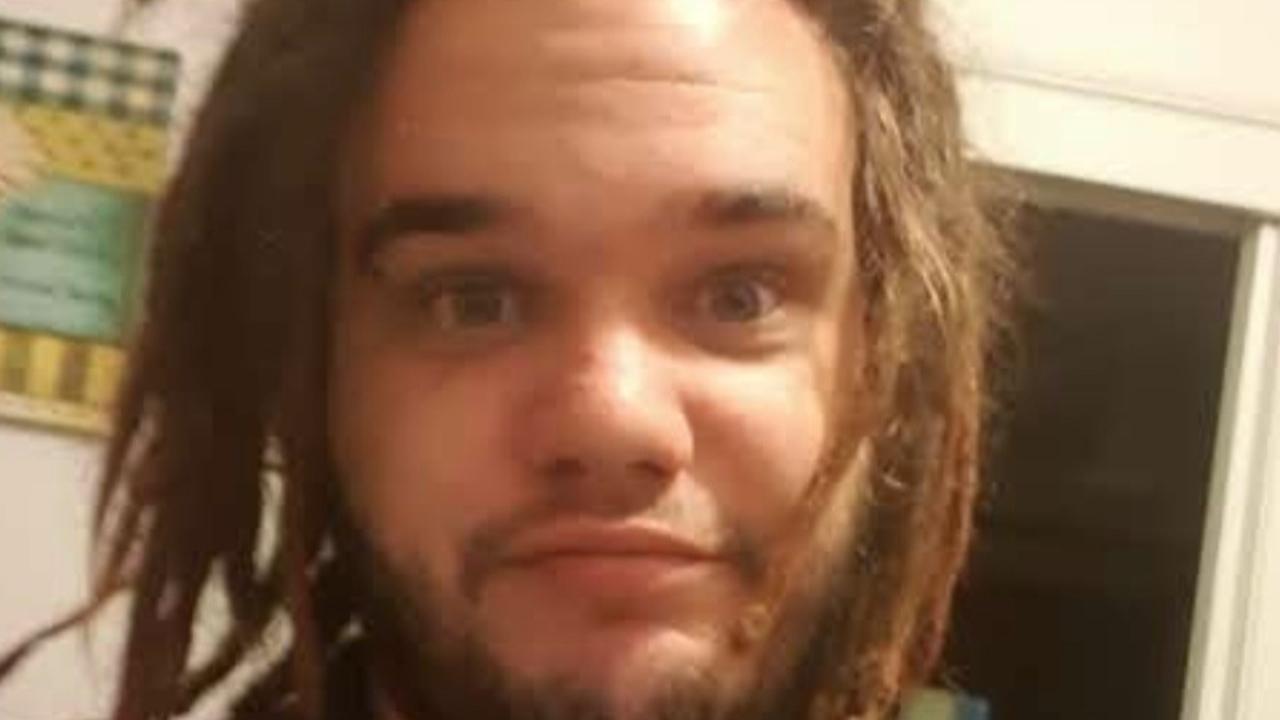Wide Bay housing crisis deepens, long-term renters homeless
In part one of a powerful series highlighting the homelessness emergency in regional Queensland, we speak to people living on the streets while battling terminal illnesses as women sleep under CCTV cameras hoping they won’t be attacked. VIDEO, PHOTOS.
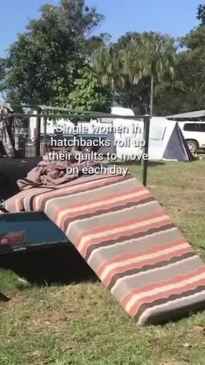
Bundaberg
Don't miss out on the headlines from Bundaberg. Followed categories will be added to My News.
Hope is in short supply at Bundaberg’s makeshift homeless camps.
From the outside, the Rum City seems to be on the move.
Millions of dollars are being poured into new projects as tourism awards pile up, factories expand and property values skyrocket.
For too many however, the reality is much darker as they are pushed and priced out of homes amid a boom that’s sent droves of newcomers, mostly southerners, to a region which like its Wide Bay cousins, was previously known for being among the most affordable coastal markets in Queensland.
News Corp’s Bundaberg NewsMail has been campaigning in 2022 to highlight the plight of our homeless, to stop the issue from being swept under the carpet and for our elected governments at all levels to stop passing the buck, and work together to resolve or at least ease this crisis.
Somewhere in the maelstrom of the pandemic, the region’s quiet life became a national delicacy, with homes “flying off the shelves” before agents could even advertise the listing.
In the past year, more than 130,000 people migrated to Queensland.
For real estate agents, it’s a long-awaited windfall.
For newcomers, their arrival in the sunshine state is a pleasant tree/sea change.
For those who relied on affordable rentals in which to live, that change is literal.
Countless numbers of people from all walks of life are now sleeping in public spaces, the bush and beaches, braving cold winters in tents, cars and sleeping bags.
By sun-up outside a camping ground the NewsMail visited this week, single women in hatchbacks roll up their quilts, take their pet dogs and drive away for the day.
Older men unzip tent doors and shuffle their way inside with bags of groceries.
Children play on public playgrounds that have become their new backyard as mattresses air in what little winter sun can be found.
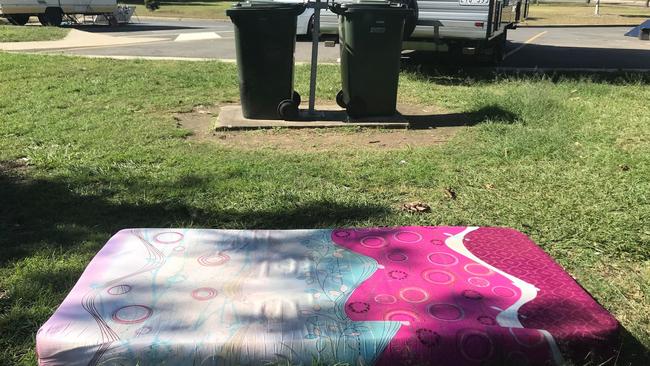
Older couples with flawless rental histories, who had never been homeless before – and never thought they would be – sit and watch the world go by, wondering what happened.
Some of the people camping out have been doing so for more than a year. They’ve worked out how to plant small amounts of vegetables in some places to supplement their nutrition.
Others have terminal illnesses.
Many have spent what little savings they had on solar panels to power small fridges and cooking facilities just so they can have basic necessities.
Among them is 71-year old Ron Hughes, who like so many, has never been homeless until now.
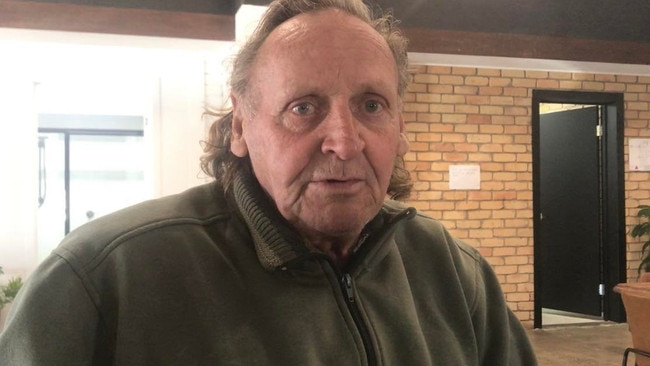
He only has partial use of his lungs and his wife, Julieann Tucker, gives a prayer of thanks every day he’s still with her.
The couple has become parental figures to many of those facing life on the streets for the first time.
With temperatures dropping as low as 4.6 degrees this winter, medical professionals have explained the cold weather exacerbates Ron’s condition and could shorten his life.
Ron is a former rodeo rider and had no trouble finding a rental until the housing crisis happened.
At the time he had to leave his rental, Ron was in hospital suffering a heart attack.
He tells the NewsMail he has contacted every government representative he can think of, but his requests for help have fallen on deaf ears.
“I’ve never been so put down and treated like such a mongrel dog,” he says, as he sits at a community support centre where he can take a shower and sit indoors for a while.
But even with his own health at risk, Ron’s concern is for the younger generations and in particular, women.
The NewsMail understands many single women without cars are choosing to sleep on public benches under CCTV, with some even wearing ‘protective’ crystals to ward off sexual assault.
One local explains she’d known a woman who had been assaulted while camping out, but no complaint was made.
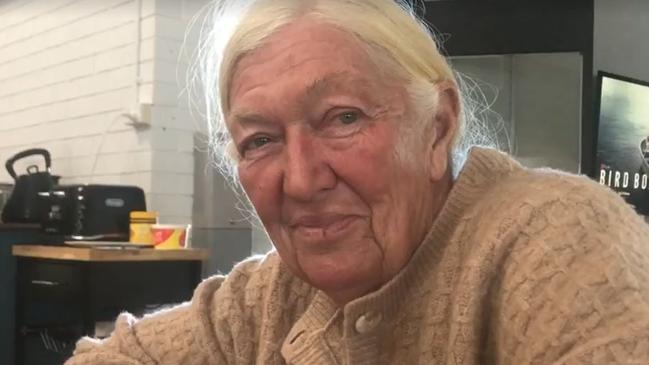
“I just think it‘s un-Australian that women and young couples with children are put homeless on the street,” Ron says
“I don’t care what excuses the council or the governments have got, it’s just totally wrong.
“The whole thing is all un-Australian, it‘s not Australian, it’s not right.”
Ron’s heart breaks when he sees women having to pack up the tents they’re sharing with their small children so they won’t be told to move on during the day.
“Get off your backsides and get some of these women and some of these kids somewhere to go.
“There’s too many weirdos out there.”
Ron also took aim at the wanton nature of interstate investors and newcomers buying up the region’s once-cheap homes.
He recounted hearing about one man who was forced to move out because his rent was put up by hundreds of dollars, only to be told by a Victorian investor that “they’ll pay it in Victoria, they can pay it here too”.
Ron says the home has since been left empty as the owner travels Australia.
“They’ve ruined people in Queensland because of all of the greed,” he said.
“They’ve done the most disgusting thing to Queensland.”
Ron believes a quick solution would be to bring disused, self-contained portable dongas from mining towns and wishes that the government would throw its weight behind the idea.
In his time of hardship, Ron believes a higher power led him to be where he is so that he could see homelessness from a perspective he’d never before seen.
“I was oblivious to it until I got put here myself,” he said.
“I believe I was pulled down from the middle of society.”
Ms Tucker is 67 and says her heart breaks as she watches children run around the camps with nowhere to call home.
She sees the reality as more and more people turn up to sleep in the open.
“They‘re coming every day. They’ve even got kids,” she said.
“Most people think it’s about ‘people have to be doing drugs and alcohol’. No, we’re homeless because people are kicking us out of their homes.”
Another older gentleman camping out in Bundaberg declined to comment on the current situation, simply saying: “no one cares about anyone anymore”.

Numbers don’t lie as pollies pass the problem around
While it’s hard for working people to find homes due to availability, those on benefits face a bigger obstacle – rapidly rising rents and a major shift to owner-occupier status rather than investment properties has meant some of the homes in Bundaberg are now more than double the price.
In a surreal, post-pandemic world, a four-bedroom brick home in Bundaberg can now cost as much as $800 a week, while a villa-style unit at Woodgate can set renters back more than $1000.
In comparison, seven nights at the Central Brunswick Apartment Hotel in Brisbane city, with free Wi-Fi and city views, costs about $835 for seven nights.
But hotel prices aren’t something most Bundaberg people can pay.
Some disability pensioners say they can only afford rents of around $250 a week.

As of July 13, 2022, a search of realestate.com.au revealed only one available Bundaberg rental for $250 or less, a simple, older style one-bedroom flat at the back of a commercial space. The industrial nature of the area means it’s not suitable for pets.
With an unofficial estimate of 1800 to 2000 people homeless in the region, it’s cold comfort for anyone.
Locals say many of the homeless are told by council officers to move on from parks and nature reserves in the area, leaving them with even fewer places to go.
Bundaberg Regional Council was asked if people were being told to move on from public areas and if so, where they were advised to go.
The council did not respond to the specific questions, but CEO Steve Johnston said the council was only “one cog in a large wheel”.
“LGAQ (Local Government Association of Queensland) has developed a Housing Action Plan which, among other measures, outlines the need for a national housing summit,” he said.
“We have supported forums and discussions at a local level but this issue is not unique to the Bundaberg region.
“Local Government is one small cog in a large wheel. We are ready to take an active role in tackling these issues, but any approach will have no meaningful impact unless industry, community and all levels of government tackle this together.”
In June 2022, the State Government announced the construction of “up to” 1200 new social and affordable homes would be in the pipeline, in what it called the largest investment in state housing in Queensland‘s history.
“The Palaszczuk Government is backing the largest concentrated investment in social housing in Queensland’s history,” it declared.
The announcement was heavily criticised by the Opposition,
Opposition housing spokesman Tim Mander said despite the current State Government having more than seven years to address the serious problem, the issue had only worsened.
He urged the State Government to take on board the findings from the recent Queensland Audit Office report on delivering social housing.
The Auditor-General made eight recommendations, which Communities and Housing Minister Leeanne Enoch has promised to follow.
The report’s recommendations revolve around reviewing the approach to tenancy management to “better respond” to changing needs and to model future demand at the state and regional levels.
“There are more than 50,000 Queenslanders on the waiting list for social housing,” Mr Mander said.
“That number has exploded by nearly 80 per cent in the last four years.
“At a time when working families on dual incomes are forced to live in cars or tents, every suggestion to improve the situation must be taken on board.”
In May, the NewsMail documented the case of Sushannah Taylor, a young Bundaberg mum who‘d gone viral on Tiktok for sharing her life as a homeless person.
One of her videos, documenting a day in the life of being homeless in Australia, amassed more than 1.5 million views.
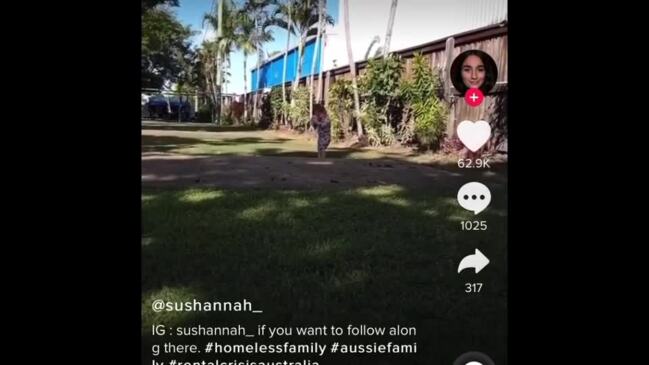
A great region in the grips of homeless tragedy
Bundaberg isn’t the only regional city feeling the pain of homelessness.
In May this year, the Gympie Times reported an increased number of people forced to live in tents.
One of those people was 31-year-old Jackson Cochrane, who felt like there was little support and his case had been palmed off “from organisation to organisation”.
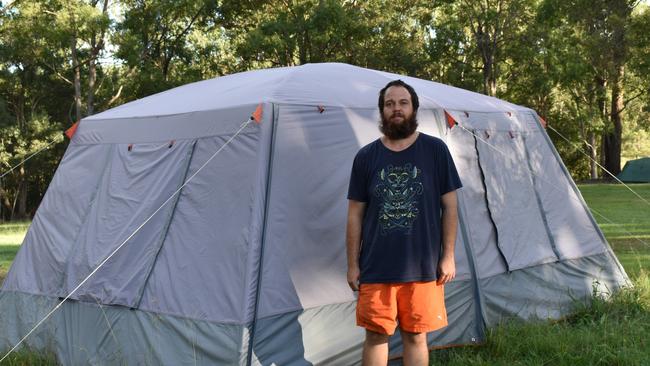
Data released at the start of the year revealed Bundaberg’s southern sibling Maryborough had nearly completely flatlined on rental availability – shrinking to just 0.1 per cent, or effectively zero.
Hervey Bay Neighbourhood Centre CEO Tanya Stevenson is at the forefront of the homeless crisis and has a list of 13 initiatives planned for the upcoming Australian Homelessness Week which kicks off on August 1.
They include an online booklet to help those dealing with youth homelessness and fold-up business cards with support service phone numbers.
Ms Stevenson said while the neighbourhood centre did not receive funding for work with the homeless, it offered as much support as it could in what was becoming an all too common problem.
“We support anyone who is in need and homelessness falls into that,” she said.
The group offers Fraser Coast locals about 80 hot, nutritious meals every Wednesday night and has a “kindness garden” where people can rest.
“We have seen the demographic of homelessness change,” she said.
“It’s now double income working families.”
With 40-60 applications on most rentals, and Fraser Coast rents soaring to around $500-600 a week, the pressure is on.
Renters are considered to be living in poverty if their rent takes in more than 30 per cent of their income, which is the cruel reality of those managing to hold on to a roof over their heads.
Many are now paying 50 to 60 per cent of their earnings to rent.

Ms Stevenson said the housing crisis had hit the region hard, because the Wide Bay had always historically had the greatest risk with housing stability.
And while $100 rent increases used to take a decade to build, they’re now growing that much in the space of 12 months.
Ms Stevenson said about two per cent of Fraser Coast youths were currently homeless, with another 16 per cent feeling unsafe.
Older women are also particularly vulnerable.
In recent Census data, Ms Stevenson said there’d been a decrease in the number of people living in a single dwelling.
The number dropped from 2.8 per cent to 2.6, and she said that equated to about 70,000 people moving in to separate dwellings.
She was unsure if it was the result of people who had been sharing a home during Covid who just got tired of living together or if an increase in domestic violence could have caused more people to leave abusive partners.
Either way, the tiny percentage drop adds to a growing crisis.
“It’s been caused by a multitude of factors, and it’ll take a multitude of factors to fix it,” Ms Stevenson said.



